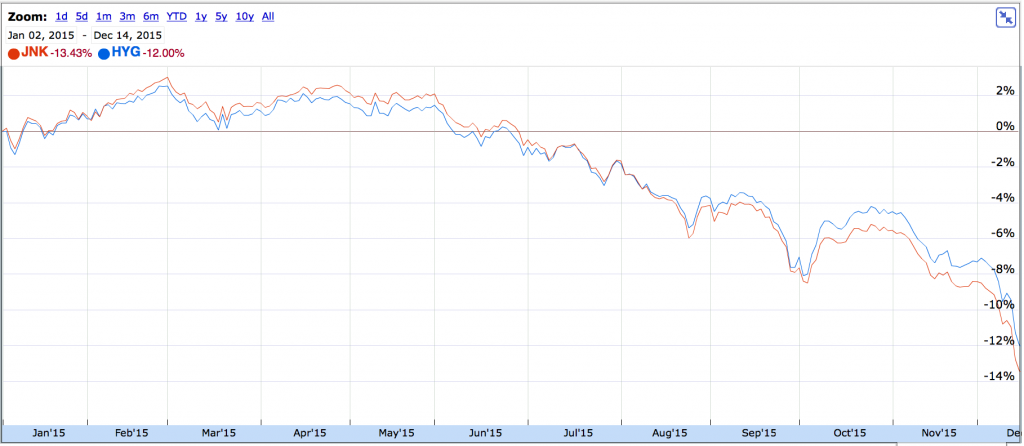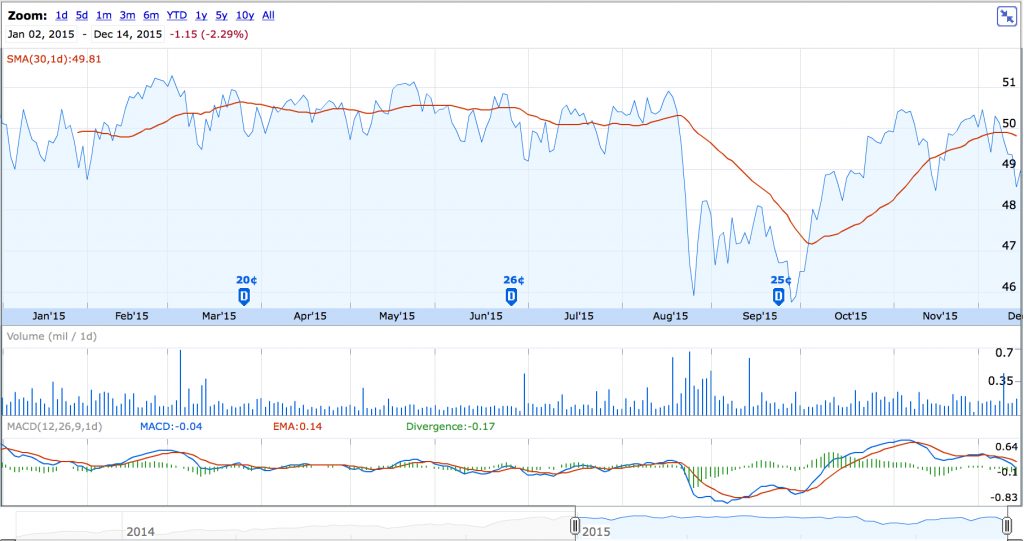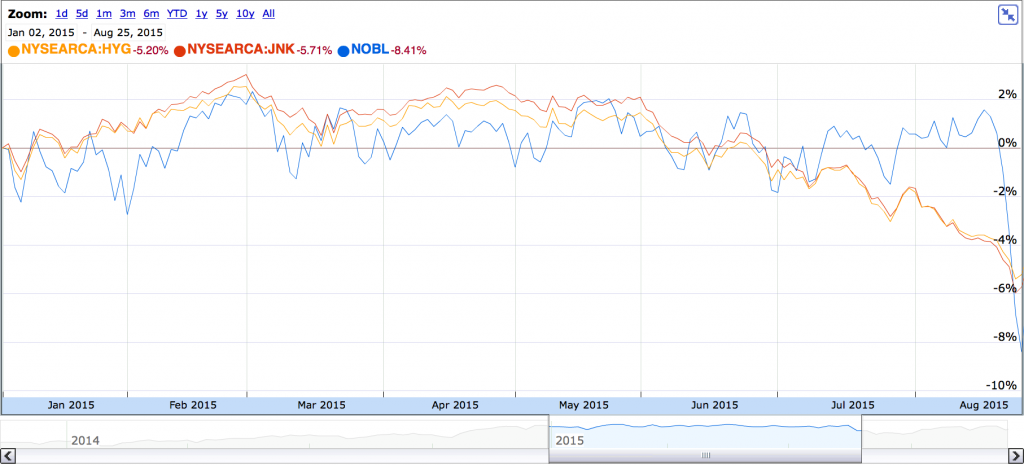At the moment, many people who hunted for yield are suffering. The high yield corporate bond market (HYG, JNK), also known as the “junk bond” market, has suffered double-digit declines in 2015 with those losses significantly accelerating in recent weeks.

The reason for this is very clear, and very financial: liquidity.
A Bank Run
The corporate bond market is huge—worth nearly $7 trillion in the U.S., it is a massive collection of millions of issues from thousands of companies. The market also is heavily sensitive to issues like interest rate hikes, default rates, and market demand from buyers—all pain points in this rising rate environment.
For one, higher interest rates on U.S. Treasuries will cause high yield rates to rise higher, which causes current high yield issues to fall in value. This concern has plagued high yield bonds for three years, but the problem has gotten significantly worse now that many people expect an initial interest rate hike in just a couple days.
Secondly, higher interest rates could theoretically cause investors to move their cash out of the high yield market and into other safer alternatives—Municipals, investment grade corporate bonds, and U.S. Treasuries, since those will all have (again, theoretically) higher yields as U.S. Treasury yields rise. Anticipating people selling out, people are already selling out.
This brings us to our third problem: the liquidity issue. Already Carl Icahn has warned that high yield will face serious liquidity issues because of redemptions, and three high yield funds have shut down and halted redemptions as they exit the market but struggle to find sellers for their holdings. In other words, these funds are all sellers in a market with not enough buyers, and that’s lowering the price of everything.
And Dividend Aristocrats?
The dividend aristocrats are a group of 53 companies that have raised dividends for the last 25 years. The full list of companies is on Wikipedia, but an ETF exists that buys just these companies (NOBL). This fund is down a little for 2015:

The sharp decline in August, when investors were fearing contagion from China and an economic slowdown in America, provided a tremendous buying opportunity that the current fears about the credit market are not repeating.
In short, the market is worried that defaults will rise, especially in energy, and the market is worried that high yield bond values will fall because of higher interest rates. But the market does not see these fears reaching to the dividend aristocrats.
Interestingly, the market saw things the exact opposite way back in August:

At that time, the market saw the dividend aristocrats as more risky than the junk bond markets. Although this doesn’t make much sense intuitively, and feels like nonsense now, it drove an incredible decline in prices back then.
This teaches us a couple of things. Firstly, the market misprices risk in asset classes and that mispricing manifests itself as short-term volatility. Investors who are, to quote Warren Buffett, greedy when the market is fearful, can capitalize on that mispricing and buy things at a discount.
Is this happening in the high yield market? Possibly. Does that mean people should buy high yield issues by the truckload ASAP? Probably not—these short-term volatility spikes can last a very long time when they impact large markets, especially when that market is over $6 trillion in size. They can also spread to other asset classes. Most worryingly, these short-term sharp sell-offs can also reflect underlying weakness that brings an asset’s value to zero. While this isn’t going to happen to the entire high yield market, it will happen to some high yield issues, just like the financial panic of 2008 brought the end to Lehman Brothers and Bear Stearns, whose shares fell all the way down to nothing.
